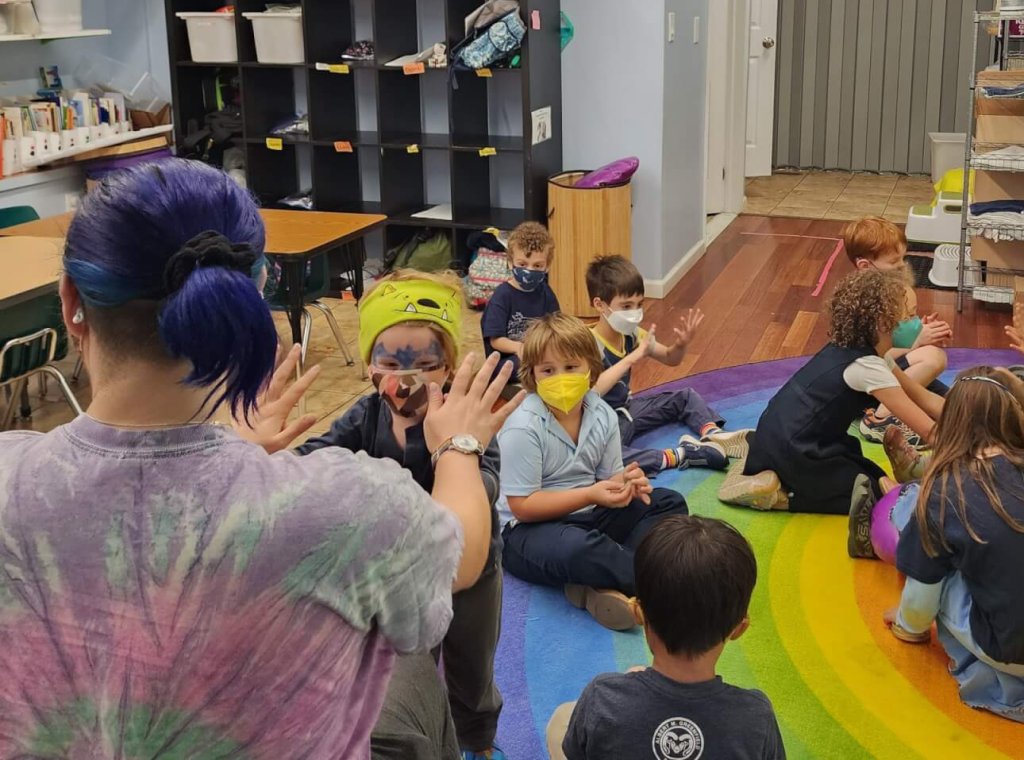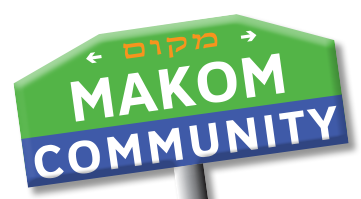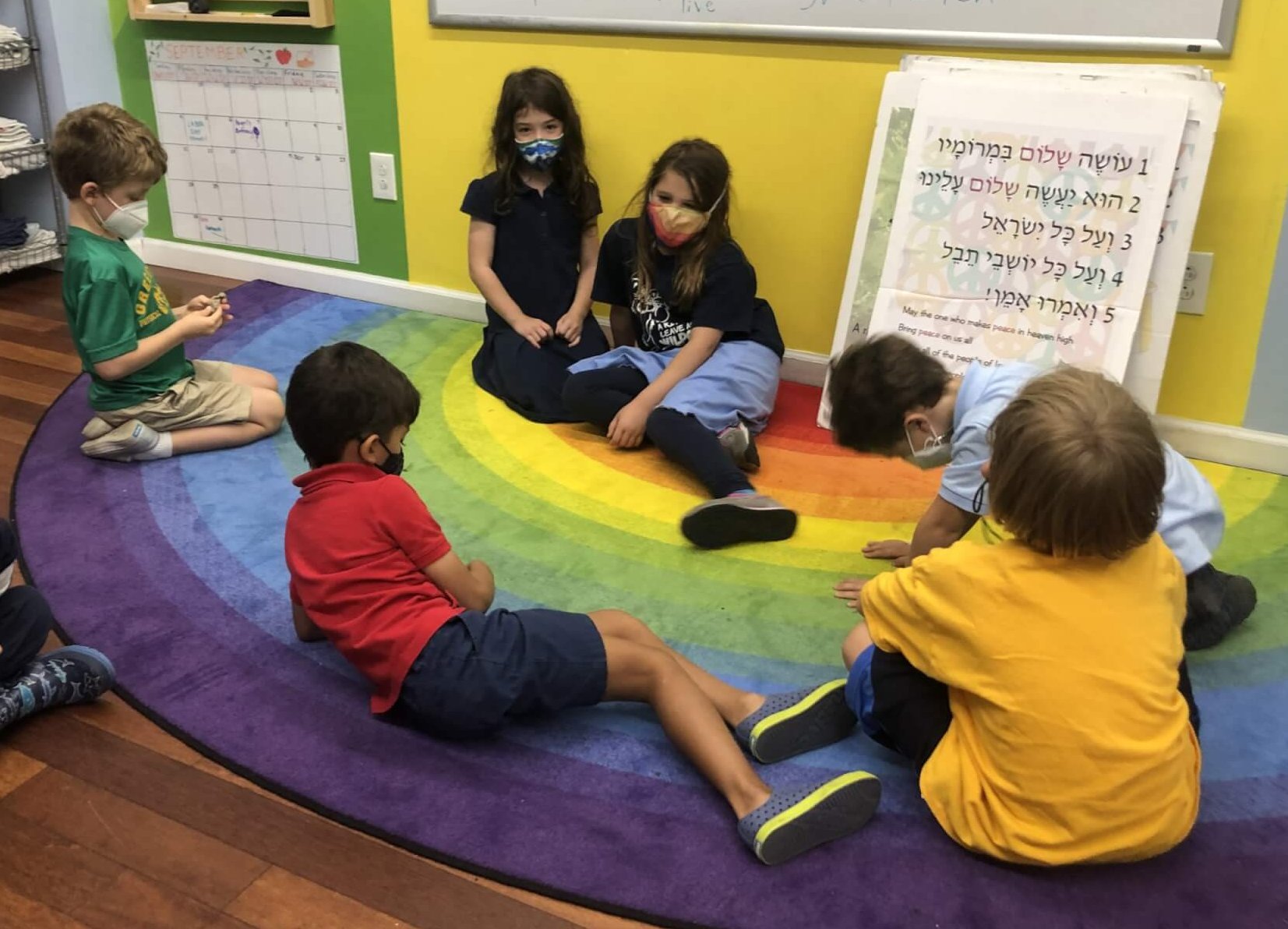
A few weeks ago, the Garinim (preK and K kiddos) in Center City unpacked what tefilah (prayer) is for. Why do we do it? What kinds of conversations are we hoping to have through it? Here’s the list we came up with:
- Praise (wow!)
- Gratitude (thank you)
- Request (help, please!)
- Creating connection, conversation, and community
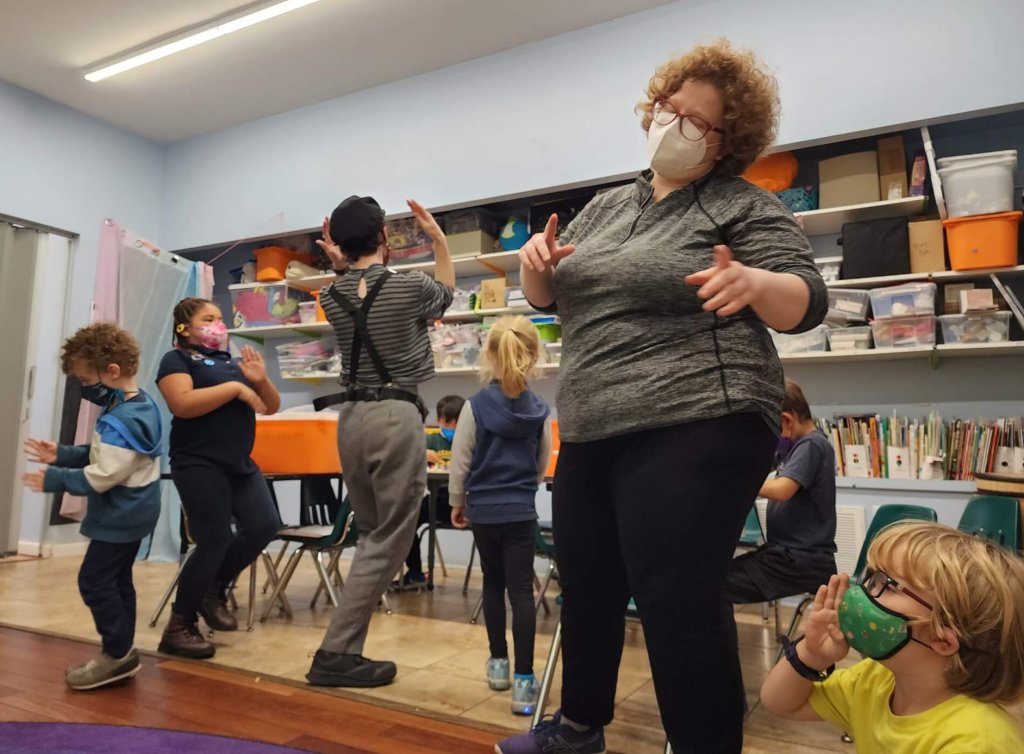
The main tefilah that sets us up to have a personal, one-on-one conversation with God is called the Amidah (standing prayer). It starts with this particular bit of choreography: stand up and take three steps back and three steps forward. Why do we do that? Why do we start the Amidah by taking three steps back and three steps forward? Our learners had these ideas:
- To move back in time and then back to the present.
- To go to the future to see how things turn out.
- To go back in time to bring our avot v’imahot (ancestors) to today.
- To move closer to God to be able to talk. We go back first because it’s like how you need to back up to have room for a running start for our souls to propel forward.
What profound ideas about those six little steps! Given such a set up to the Amidah, with space to think about the past and the future, and a ritual to connect directly to God, what would you say, then? What might you want to talk about in a one-on-one conversation with God or yourself or the universe? The kiddos had varying answers:
- I would talk about everything living in nature.
- I would ask for everyone to live forever.
- I would talk about how much I love God.
- I would ask why my parents can’t let me have my own fidget box.
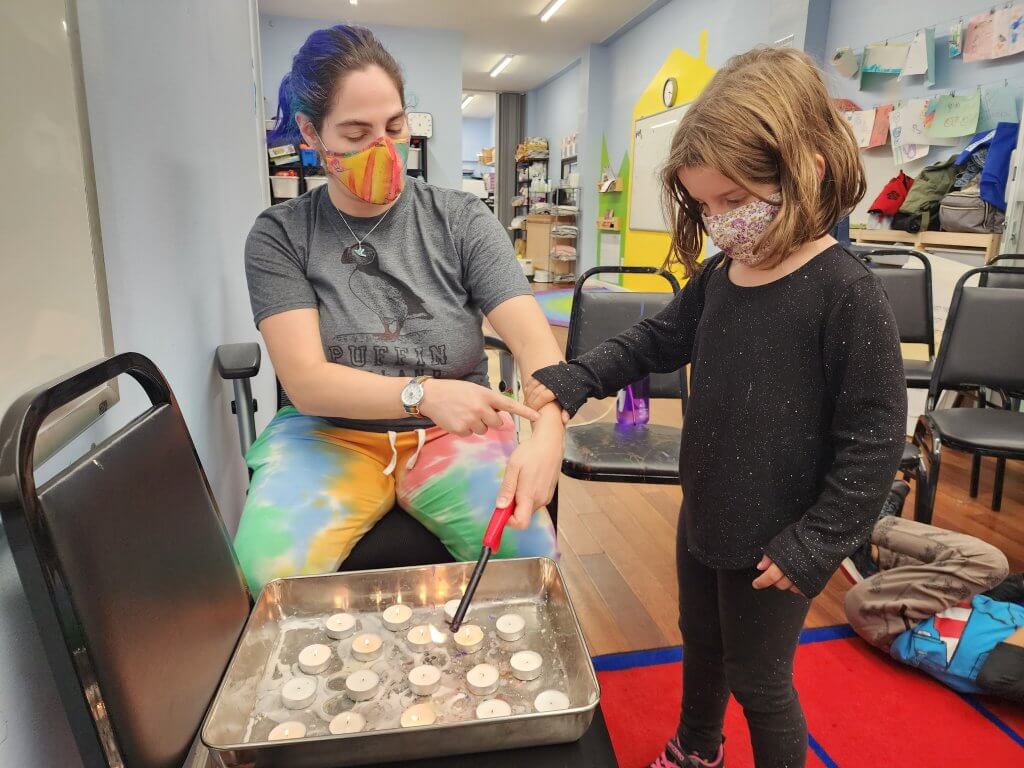
More recently, we’ve shifted our focus from thinking about using tefilah for personal conversations with God to using tefilah as a means of praise. But what actually does praise mean? When do we experience it in our own lives?
We used a handful of activities to explore these questions. Kiddos watched videos of some incredible nature clips like this one and made lists of all the bits that made them say “wow!” They decorated a cardboard box and filled it with post it notes covered in praise for each other and Makom Community. They posed their bodies into human sculptures of people praising while other kiddos gave the statues voice, imagining what they might say and who or what they might be saying it to or about. We explored praise through music, creating our own instruments out of recycled materials and using them in tefilah, and through dance, moving our bodies in ecstatic praise. At Makom Community, we cherish the opportunity to explore praise through tefilah and have discussions that deeper ou understanding of this practice.
